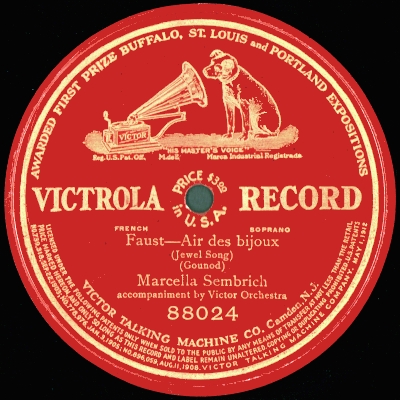

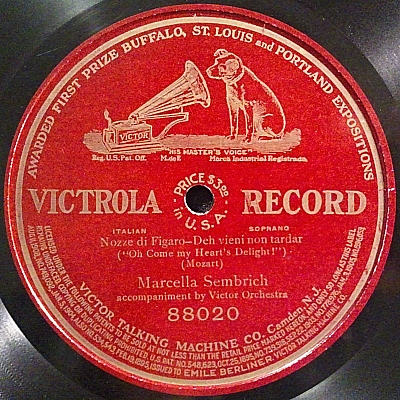 |
| Nozze di Figaro - Deh viene non tardar ("Oh Come my Heart's Delight!") |
| Marcella Sembrich |
| Victor 88020 |
| Matrix# C-3362, Take 1 |
| May 5, 1906 |
| New York, New York |
 |
| Faust - Air des bijoux (Jewel Song) |
| Marcella Sembrich |
| Victor 88024 |
| Matrix# C-3360, Take 1 |
| May 4, 1906 |
| New York, New York |
| Note: Very worn. |
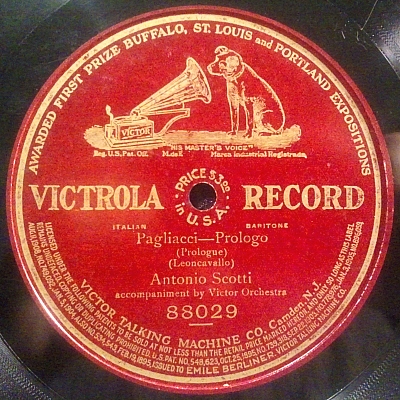 |
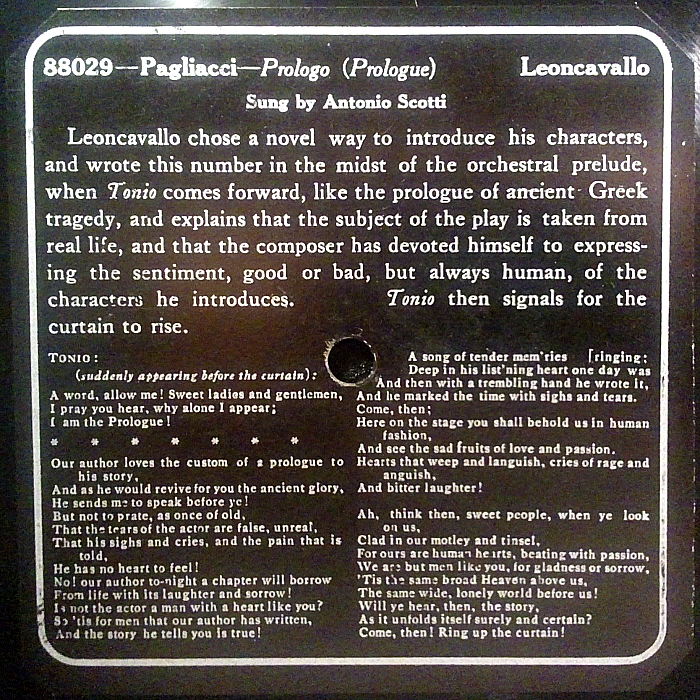 |
| Pagliacci - Prologo | (Blank) |
| Antonio Scotti | |
| Victor 88029 | |
| Matrix# C-3175, Take 5 | |
| October 5, 1909 | |
| Camden, New Jersey |
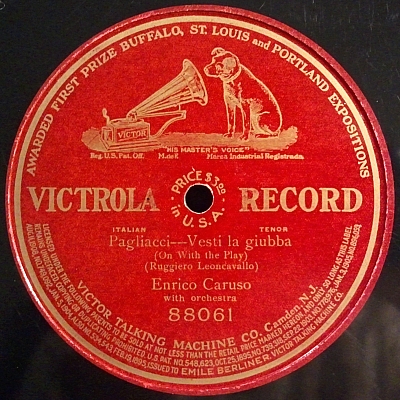 |
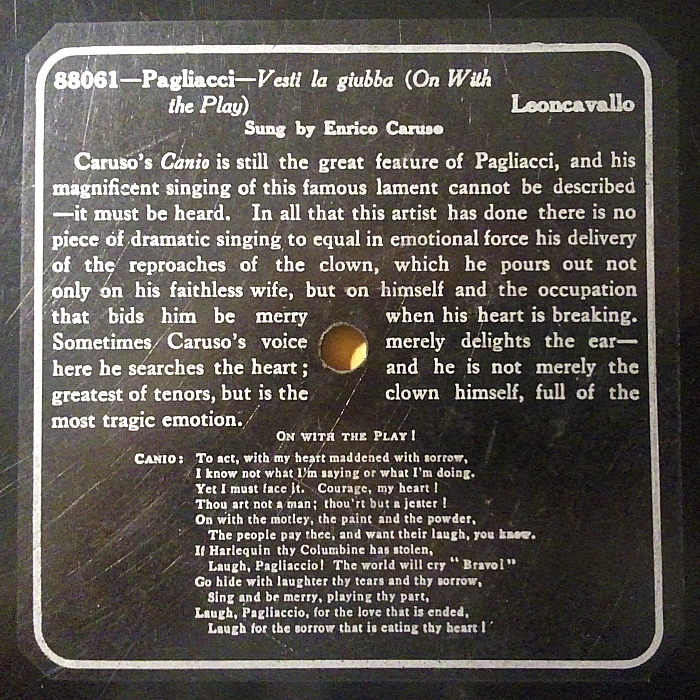 |
| Pagliacci - Vesti la giubba | (Blank) (Notes from the back of a later re-release, not this disc) |
| Enrico Caruso | |
| Victor 88061 | |
| Matrix# C-4317, Take 1 | |
| March 17, 1907 | |
| New York, New York |
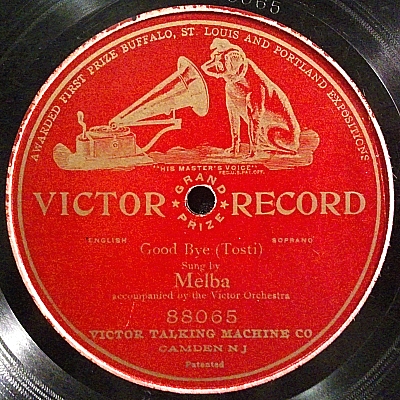 |
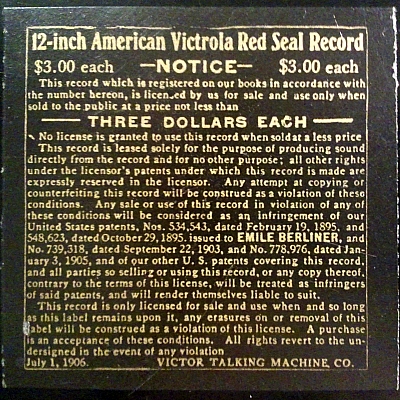 |
| Good Bye | (Blank) |
| Melba | |
| Victor 88065 | |
| Matrix# C-4340, Take 1 | |
| March 27, 1907 | |
| New York, New York |
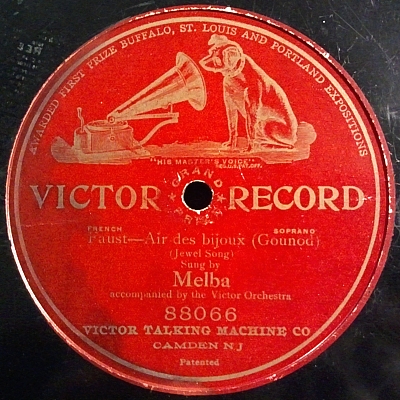 |
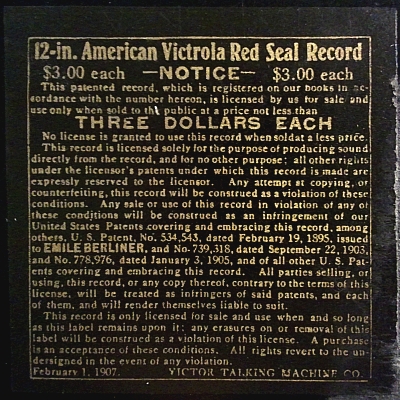 |
| Faust - Air des bijoux (Jewel Song) | (Blank) |
| Melba | |
| Victor 88066 | |
| Matrix# C-4338, Take 2 | |
| March 27, 1907 | |
| New York, New York | |
| Note: Worn. |
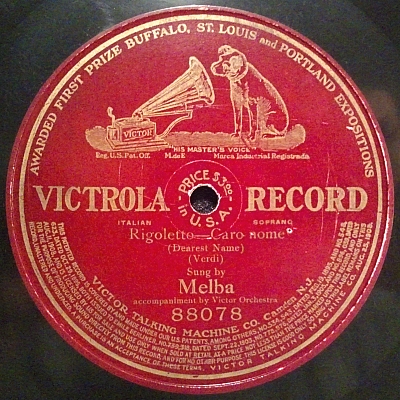 |
| Rigoletto - Caro nome |
| Melba |
| Victor 88078 |
| Matrix# C-4283, Take 2 |
| March 5, 1907 |
| New York, New York |
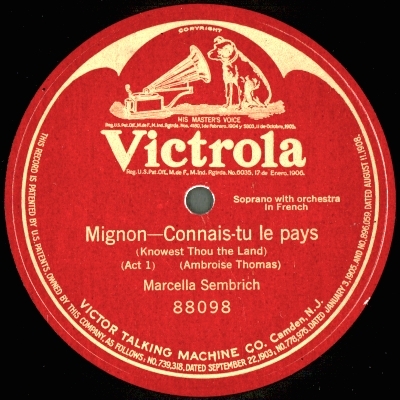 |
| Mignon - Connais-tu le pays (Knowest Thou the Land) (Act 1) |
| Marcella Sembrich |
| Victor 88098 |
| Matrix# C-4872, Take 1 |
| October 9, 1907 |
| New York, New York |
| Note: Baton audible before song. |
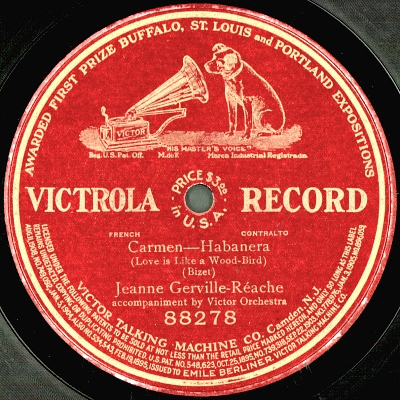 |
| Carmen - Habanera (Love is Like a Wood-Bird) |
| Jeanne Gerville-Réache |
| Victor 88278 |
| Matrix# C-8334, Take 1 |
| December 9, 1910 |
| Camden, New Jersey (?) |
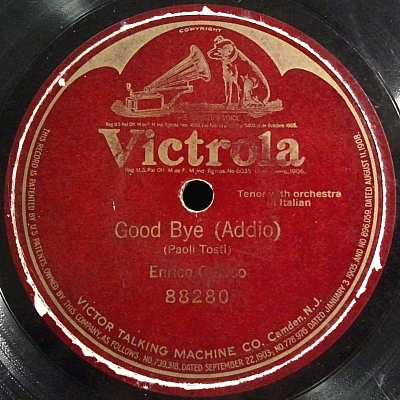 |
| Good Bye (Addio) |
| Enrico Caruso |
| Victor 88280 |
| Matrix# C-9747, Take 1 |
| December 29, 1910 |
| Camden, New Jersey |
| Note: Worn. |
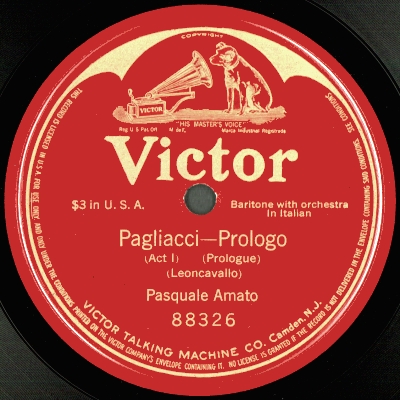 |
| Pagliacci - Prologo (Act 1) |
| Pasquale Amato |
| Victor 88326 |
| Matrix# C-11210, Take 3 |
| November 9, 1911 |
| Camden, New Jersey |
| Note: In-studio bump at 0:13. |
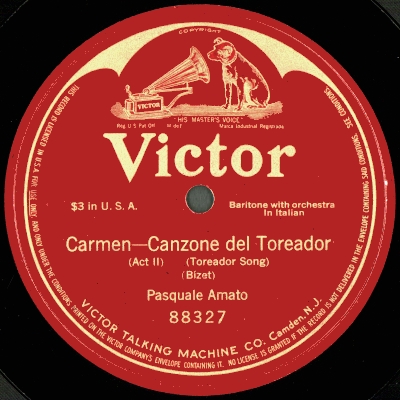 |
| Carmen - Canzone del Toreador (Toreador Song) (Act 2) |
| Pasquale Amato |
| Victor 88327 |
| Matrix# C-11213, Take 1 |
| November 9, 1911 |
| Camden, New Jersey |
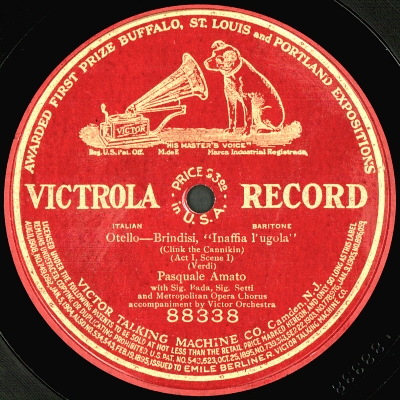 |
| Otello - Brindisi, "Inaffia l'ugola" (Clink the Cannikin) (Act 1, Scene 1) |
| Pasquale Amato |
| Victor 88338 |
| Matrix# C-11284, Take 2 |
| December 10, 1911 |
| Camden, New Jersey |
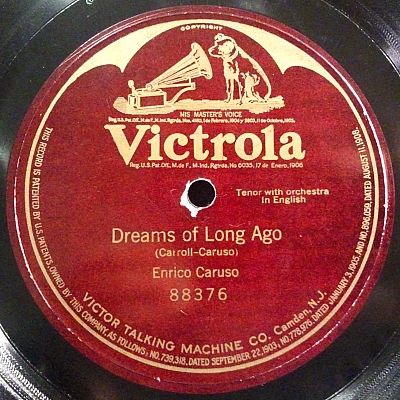 |
| Dreams of Long Ago |
| Enrico Caruso |
| Victor 88376 |
| Matrix# C-11616, Take 3 |
| April 18, 1912 |
| Camden, New Jersey |
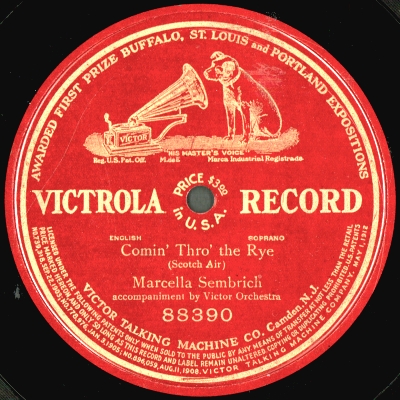 |
| Comin' Thro' the Rye |
| Marcella Sembrich |
| Victor 88390 |
| Matrix# C-12474, Take 1 |
| October 4, 1912 |
| Camden, New Jersey |
| Note: Needle dig at 0:21. |
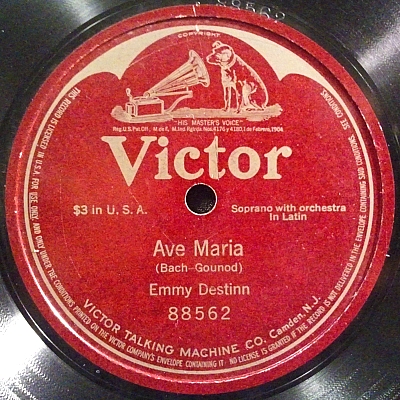 |
| Ave Maria |
| Emmy Destinn |
| Victor 88562 |
| Matrix# C-17498, Take 1 |
| April 14, 1916 |
| New York, New York |